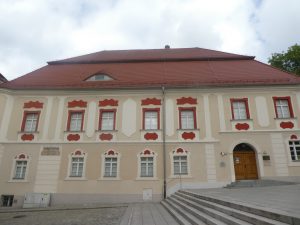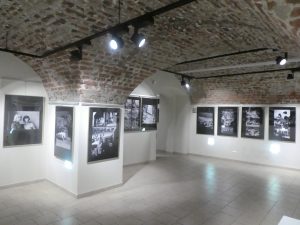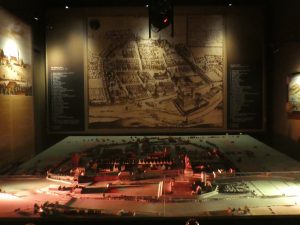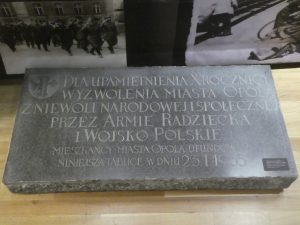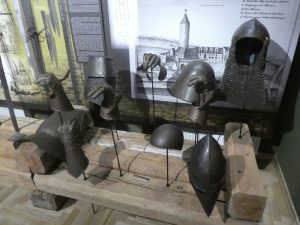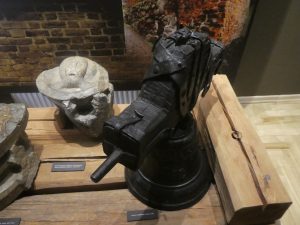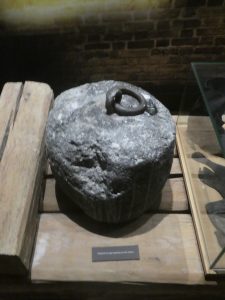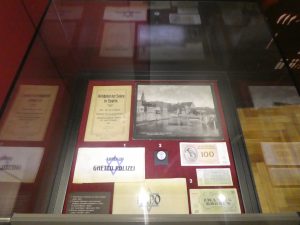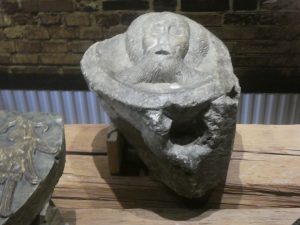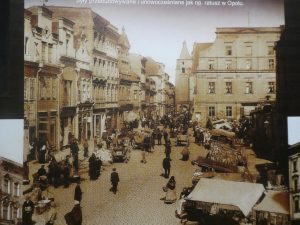Opole – Museum of Opole Silesia
I’ve been greatly impressed over recent years about the quality of museums across Poland, they’ve been redeveloping and refocusing their collections to a wider audience and making them more accessible. The Silesian museum in Katowice, which isn’t all that far from Opole, is exceptional in nearly every regard, including the staffing, the presentation, the quality of the exhibits and the explanations.
Since I haven’t moaned about anything in a while, I feel the need to note that this museum in Opole was an exception, I thought it was pretty third rate.
The first problem that the museum has is that it has its exhibitions dotted all around the building. The above photographic exhibition was in one of the basements, and there was a ceramic exhibition located in another set of separate rooms. The museum has made pretty much no effort here to bring it all together, there was no map handed to visitors, no clear signage and no staff member directing visitors. There were some orientation maps on the wall which helped slightly, but not much.
I’m fairly convinced that I missed some parts of the museum, as I found an exhibition that I wasn’t allowed in (and was ushered out of quite quickly) and I’ve noticed photos of sections that I didn’t see. I kind of like these mistakes now, I feel that I’m a useful reminder to museums that visitors sometimes need assistance.
I also had the unfortunate issue of three sets of Polish visitors asking me questions. I wasn’t much help with my answers, and I understood little of their question, but they were clearly all asking for directions. So if the Poles can’t find their way around the city’s main museum, there was little hope for someone who is as incompetent, and British, as I am.
Anyway, onto the main exhibit (or at least, the main exhibit that I was able to find and be allowed into) which was a series of rooms detailing the history of the region. Above is a model of the city in the eighteenth century, and this was the stand-out part of the museum for me. It was inter-active, interesting and a really useful way to get an impression of how Opole used to look.
This granite plaque was placed outside of the city hall and it commemorated the occupation of Opole by the Red Army in 1945. It was taken down in 2008 and the museum will be its permanent home.
A display of old weaponry from the area.
A sixteenth century bell from the city hall.
A stone used as a counterweight which assisted in the weighing of heavy items.
Items of interest to the Jewish community.
A carved stone head from the city’s church, dating back to the fourteenth century.
A photo from the early twentieth century of the town’s main square.
The English translations in the history section of the museum were excellent, well translated and clearly put together. The museum skipped sections of history, there was little about the early twentieth century and the First World War (although a lot about the plebiscite after it) and not much about the Second World War, although there was a little.
So, I’m left none the wiser about whether troops from the area went to fight in the First World War, not particularly clear about what happened in the city during the Second World War and perplexed about why the museum say that Opole was liberated in two stages by the Red Army (it might well have been, but this isn’t what other history books suggest). There was some brief mention of the mass transfer of German people for Polish people when the borders moved, but perhaps there could have been more. Perhaps the information was there in the Polish text though to be fair.
I found the ethnography section of the museum, which had some interesting pieces in, but that was pretty much the end of the tour for me. There was probably more to the museum, but the entire operation of this place seemed to be a throwback to the bad old days of poor customer service, so I was content to just give up.
Overall, I thought it was all pretty inadequate. Entrance was £2, moderate enough by international comparison, but not cheap by Polish standards. Perhaps a decent compromise here would be to shut this museum down and for the Silesian Museum in Katowice to open something new and exciting in Opole instead.

